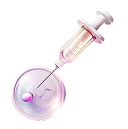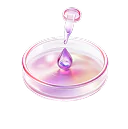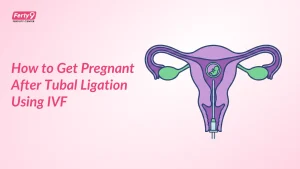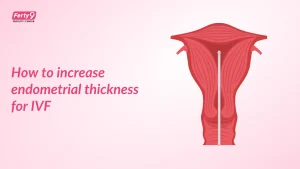Ever heard about the frozen embryo transfer process?
If you have visited a fertility clinic or are looking for fertility treatments, you must have come across the term IVF frozen cycle.
In IVF or In Vitro Fertilization, every little embryo is a hope. Hence, saving or freezing the extras can help you later in the treatment. These extra embryos from a given IVF cycle can be a wonderful thing.
IVF treatment is a long process that consists of various attempts at embryo transfer. Later, just one embryo can reach the final baby stage. In vitro fertilization involves ovarian stimulation by medications to enable the production of multiple eggs. All of these are later fertilized by male sperm samples, and multiple embryos are created. These extras are saved for the future and can be used as a frozen embryo transfer process.
These aren’t saved just casually but in a cryopreserved setting. These surplus embryos help when the first embryo transfer isn’t successful.
In this blog, we will explore all about the frozen embryo transfer process, its IVF transfer procedure, benefits, and protocols. Let’s dig in!
Related Read: 7 Reasons to Consider Frozen Embryo Transfer
What is Frozen Embryo Transfer?
- Frozen embryo transfer, or FET, is a technique used extensively in ART (assisted reproductive technology). It involves the transfer of preserved embryos into the woman’s uterus.
- The frozen embryo transfer process follows the basic IVF steps that will be discussed in our next section.
Related Read: What to Do Before and After Embryo Transfer?
What Are the Steps of Frozen Embryo Transfer?
The ‘embryo transfer process step by step’ follows the same timeline as the first IVF procedure. You just won’t be asked to go through ovary stimulation and egg retrieval process.
These are as follows:
Embryo thawing
The first step in the IVF frozen cycle is the thawing of preserved embryos. The process is done under the guidance of a medical professional and fertility expert. It happens in the controlled lab setting to make sure the thawing is done properly and no embryo is lost during the procedure.
Endometrial preparation
Endometrial preparation involves preparing the woman’s uterus lining. Before the IVF transfer procedure, the doctor makes sure the uterus is prepared to receive the embryos. Your fertility expert will administer hormonal medications for this. These involve estrogen and progesterone to mimic the natural menstrual cycle.
Monitoring
The whole endometrial preparation process is monitored closely by the medical professional. They will check the hormone levels and uterine lining thickness before the frozen embryo transfer process. These are monitored through blood tests and ultrasound examinations.
Also Read: Endometrium Thickness in Pregnancy: Symptoms & Treatment
Embryo transfer
Once the uterus lining is prepared and ready to transfer, the embryos are transferred. They are taken inside the uterus via a thin and flexible catheter. The whole process is performed in an IVF clinic without the use of anesthesia.
Luteal phase
After the embryo is transferred to the woman’s uterus, the doctor ensures hormonal support (also called luteal phase support) to maintain the uterine lining. These hormones also support the early stages of pregnancy (if successful).
Pregnancy test
The doctor will ask you to take a pregnancy test after 2 weeks of embryo transfer. This ensures the success of the ‘IVF cycle frozen embryo’! Make sure to consult your doctor before taking the pregnancy test.
Protocols for Frozen Embryo Transfer
There are a few protocols doctors follow for the frozen embryo transfer process. These include natural cycle FET, modified natural cycle FET, and medicated cycle FET:
Natural Cycle FET
This closely mimics the woman’s natural menstrual cycle. This monitoring helps the doctor determine the time of ovulation, which later helps in the timing of embryo transfer. Both of these are well-aligned with natural ovulation.
Natural cycle frozen embryo transfer is best suited for women with regular menstrual cycles and good ovulation.
Related Read: How to Increase Ovulation Naturally
Modified Natural Cycle FET
The modified natural cycle of the frozen embryo transfer process is similar to the first protocol. It also monitors the woman’s natural menstrual cycle but with hormonal medication support. These medications are added to support the growth of the uterine lining, which will provide more support for embryo implantation.
The modified natural cycle frozen embryo transfer is helpful for those who have irregular menstrual cycles or thin uterine lining.
Related Read: Can Music Improve Embryo Implantation?
Medicated Cycle FET
The medicated cycle involves hormonal medication that will suppress the natural menstrual cycle. After the cycle is suppressed, hormonal medications are used to control the ovulation timing and also prepare the woman’s womb for embryo transfer.
This protocol is medically stimulated and provides full control over the timing of transfer. It is used for those with irregular menstrual cycles or specific medical conditions like PCOS.
Your medical health expert will provide the appropriate protocol, depending upon factors like age, medical history, and previous response to the IVF treatment.
The Advantages of Frozen Embryo Transfer
There are many advantages of the frozen embryo transfer process, including:
- Higher success rates – FET has a higher success rate as compared to the fresh embryo transfer. Here, you can select the most viable embryos for transfer, giving a higher chance of pregnancy.
- Improved timing – the frozen embryo transfer provides better flexibility in timing. Doctors know when to transfer the embryo, increasing the chances of pregnancy.
- Reduces risk of ovarian hyperstimulation syndrome or OHSS- the process reduces the risk of OHSS, which is a potentially serious complication of IVF treatment.
- Pocket-friendly—Frozen embryo transfer is pocket-friendly compared to fresh embryo transfer. The female is not asked to go through ovarian stimulation cycles.
Related Read: Embryo Transfer: What to Do and What to Avoid
Conclusion
The frozen embryo transfer process is very useful in in vitro fertilization. Make sure to understand the steps involved in the process, such as embryo thawing, uterus lining preparation, and embryo transfer. This will help patients be better prepared for the fertility journey.
FET has higher success rates than fresh IVF cycles, around 50-60% per transfer. Experts at Ferty9 make sure you are well aware and ready for the process.




























